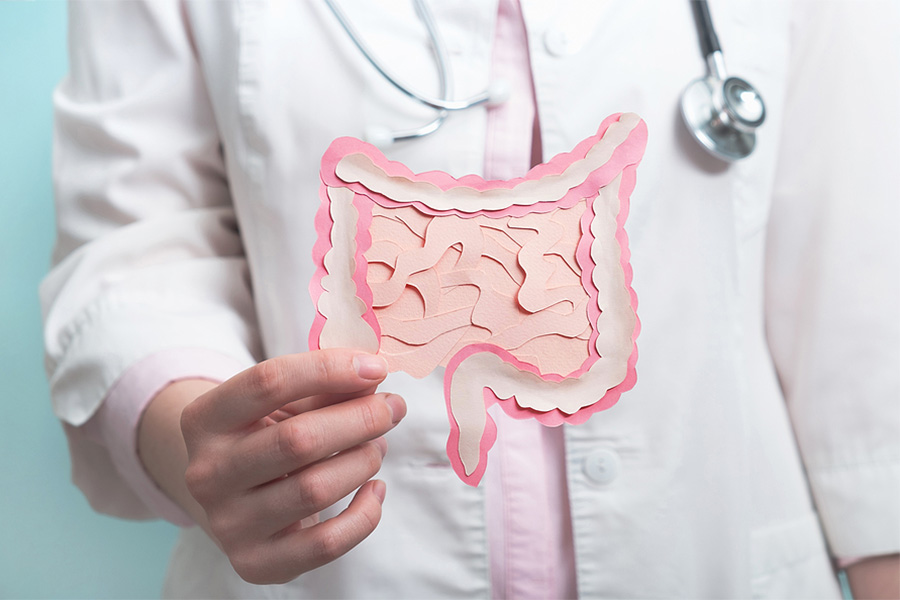Updated 06/03/2020
“Should I try a gluten free diet?”
I can’t tell you how often I’ve been asked this question over the years. My response is always the same: it doesn’t hurt to try it. I’ve helped countless women reduce painful symptoms through elimination diets, especially in cutting out gluten. The only risk is that nothing will change – and if you just keep doing what you’ve been doing, nothing changes either. If you try going gluten free with no results, we have to dig deeper into what might be happening. Since I’m always looking at the whole picture, I’ll be doing that anyway; the more questions we ask, the more answers we may end up with.
I know that up to 30 percent of the population carries a genetic predisposition to gluten sensitivity and celiac disease. With this predisposition, you are more likely to experience an inflammatory/autoimmune response in your gut when you are exposed to gluten, an antigenic protein found in many grains that are part of the wheat family (and other grains like rye and barely). So it makes sense, particularly if you know you have this genetic predisposition, to avoid exposure.
Even if you haven’t had genetic testing, eliminating gluten can give you important information, and can make a huge difference in how you’re feeling. So why not give it a try?
Why should I go gluten free if I don’t have celiac disease?
I hear that question a lot as well. And it’s a good question to ask; I think it’s always important to understand why you’re doing something rather than just latching on to the newest fad.
And gluten free diets certainly have become a fad! The explosion of gluten free products on the supermarket shelves is a testament to that. Here’s the thing about that – although it is nice to have some choices for things you simply can’t give up entirely, binging on gluten free cookies is not the path to good health! Many of the products that contain gluten aren’t great for you in the first place – bread, pastries, cookies, and crackers…need I go on?
But let’s get back to why I suggest eliminating gluten, even if you’ve had a negative antibody test for Celiac Disease. The biggest reason is that difficulty processing gluten isn’t so straightforward. A wealth of research shows that there’s a spectrum in the way gluten is tolerated for many people.
I have a friend, Elisha, who experienced joint pain, bloating, fatigue, and headaches for more than a year. She chalked it up to just getting older and was resigned to dealing with the pain and discomfort long term. I suggested she try a gluten free diet because those were well known symptoms of gluten sensitivity.
She’d never even heard the term! As part of the comprehensive workup her doctor had ordered, she’d had the antibody test to see if she had Celiac Disease, and it came back negative. That was the end of the gluten discussion with her physician.
She was a bit skeptical, but figured she had nothing to lose – except the painful symptoms. And to her surprise, after several weeks of following a gluten free diet, her symptoms were so much better! She hadn’t had a headache in weeks, her belly was no longer bloated, and she gleefully wiggled her fingers and toes, exclaiming about how much better they felt to move.
I’ve seen so many women like Elisha come through my practice. That’s why I think it’s important to clear up the confusion about the differences between gluten sensitivity, wheat allergies, and celiac disease.
Defining the terms
For far too long, there’s been extreme confusion around the term gluten sensitivity vs. actual celiac disease. Often, conventional medicine continues to ignore the diagnosis of gluten sensitivity, though things are slowly shifting on that front as more research comes available.
In 2012, a group of 15 well-known celiac researchers published a report that breaks the spectrum of gluten related conditions into three main categories: allergic, autoimmune, and immune-mediated (meaning not autoimmune nor allergic, which includes gluten sensitivity).
In this report, the researchers noted that there is little known about gluten-related disorders that aren’t celiac disease, especially gluten sensitivity, and called for more research.
It’s great that these non-celiac gluten disorders are getting some attention! There’s still a lot of work to do, but at least there’s an effort to recognize the range of difficulties that can result from a gluten sensitivity.
Celiac Disease and Autoimmune Disorders
Celiac disease itself is a serious autoimmune disease, but even more concerning is the fact that other autoimmune disorders are ten times more likely in celiac patients than in the general population.
These include:
- Type 1 (autoimmune) diabetes
- Thyroid disease
- Addison’s disease
- Cardiomyopathy
- Sjögren’s syndrome
- Autoimmune liver disease
- Osteoporosis
- Rheumatoid arthritis
- Hair loss
And I’d venture a guess that other gluten issues may also contribute to these issues. That’s why proper diagnosis is so important. The sooner you know what you’re up against, the sooner you can take important steps towards healing.
Testing and Treatment
While there are specific tests recommended for both allergies and celiac disease, no such tests exist for gluten sensitivity. Diagnosis is through exclusion, including negative allergy and celiac tests, an elimination diet, and careful, supervised reintroduction of gluten into the diet.
Celiac disease is most often associated with significant anatomical changes within the lining of the gut, specifically the small intestines. A wide range of symptoms can be present before a diagnosis and there is always presence of certain antibodies in the blood, particularly anti-endomysial, and anti–tissue transglutaminase antibodies. For many years the gold standard to obtain a positive diagnosis was to obtain an intestinal biopsy. The more damage and irritation to the gut, the more likely the antibodies would be elevated.
Below are the laboratory tests used in diagnosing celiac disease
- Three-month trial of gluten elimination
- Celiac panel
- Anti-deaminated gliadin IgG and IgA
- Anti-gliadin IgG and IgA
- IgA anti-endomysium antibody
- IgA and IgG anti-transglutaminase ELISA (tTG)
- Total IgA (IgA deficiencies ten times more common in CD)
- HLA DQ2, DQ8 typing
- Intestinal biopsy
You might think that with all those tests, celiac disease would be easy to diagnose – but some research indicates that it’s misdiagnosed nearly 50% of the time! That’s because the symptoms mirror so many other digestive disorders, and many doctors don’t immediately consider the gluten factor. Many patients displaying distressing GI symptoms are told that they have some form of Irritable Bowel Syndrome, or IBS. And the longer they go on exposing their body to gluten, the greater the damage to the intestines and other negative effects throughout the body. That’s why an awareness of how gluten can impact health is so important.
Patients with celiac disease are typically advised to follow a strict gluten free diet for the rest of their lives. Those with sensitivity may only need to cut back or eliminate gluten temporarily, slowly reintroducing it after giving their system a break. With sensitivity, it is often thought that small amounts of gluten can be okay.
I, and many of my functional medicine colleagues, feel that there are many degrees between these two ends of the spectrum. A very mild sensitivity might well tolerate some exposure to gluten, at least initially. But with continued exposure these mild issues may develop into far more serious symptoms.
Symptoms related to gluten sensitivity
Until fairly recently, the term gluten sensitivity was barely used. But these days, it’s more frequently identified and accepted because of its prevalence. There is even an insurance code for the diagnosis now!
Many of the symptoms are similar from one end of the spectrum to the other, with a notable exception. Gluten sensitivity doesn’t seem to cause the damage to the gut lining that results from celiac disease.
In that report I mentioned earlier, the researchers determined that people with non-celiac gluten sensitivity typically have more symptoms unrelated to the GI tract, such as headache, fuzzy thinking, joint pain, and numbness in the fingers, arms or legs.
The different categories of gluten-related disorders come with much different time frames for the onset of symptoms. Allergic reactions cause symptoms minutes to hours after gluten exposure. With autoimmune issues, including celiac disease, onset of symptoms is weeks to years after gluten exposure, as gluten builds up in the system causing damage to the intestinal lining. With immune-mediated problems, including gluten sensitivity, the onset is hours to days after gluten exposure.
Because symptoms, except in cases of allergy, can be so delayed, it can be difficult to realize that gluten is the problem. That’s where an elimination diet comes in.
Trying an Elimination Diet
It’s important to remember that if you’ve been happily eating products that contain gluten for years, it will take some time to clear your system. One day of avoiding gluten exposure won’t tell you anything. I suggest eliminating gluten for at least two weeks before slowly reintroducing it.
I also recommend keeping a journal of how you are feeling, both when you begin and throughout the process. If determining gluten sensitivity is the goal, don’t eliminate other foods that can be a problem (like dairy or nuts), since you won’t know which made the difference if symptoms subside.
When you begin to reintroduce foods that contain gluten, start slowly and pay close attention to any symptoms that appear. Write it all down so that you have complete information to share with your health care practitioner, who should be your partner in this process.
Skip the gluten with these 5 tips
An elimination diet can be tricky at first, but once you get the hang of it you’ll discover so many great options. Here are five tips to follow for easy avoidance:
1. Always read labels. Because so many people lead a gluten free lifestyle these days, more and more labels are clearly marked as such. But gluten can be sneaky; it’s in a lot of popular condiments, for instance. And like sugar, wheat assumes many names, including durum. einkorn, khorasan (kamut), spelt or farro, and triticale. Be sure you know what you’re looking for and look closely at the products you choose.
2. Choose gluten free grains. A gluten free diet doesn’t have to be devoid of all grains. There are a lot of great choices that are naturally gluten free. Some of my favorites include quinoa, brown rice, millet, amaranth, and buckwheat. Oats are another good option, but some brands are exposed to gluten during processing, so look for a certified gluten free label.
3. Eat more fresh fruits and vegetables. Filling up on a wide range of delicious fresh produce can keep you full and satisfied. And because fruits and vegetables offer essential nutrients and minerals, it’s never a bad thing to eat more of them. Many gluten free diets are lacking in some of these nutrients, so getting them from another source is critical. Be careful about canned or frozen options, however – these often contain gluten.
4. Remember that many beverages contain gluten, especially those with alcohol. Beer, in particular, is produced by fermenting grains like wheat or barley, which contain gluten. Wine coolers and other malt beverages also have gluten in them. Distilled liquors like vodka or gin, along with wine are typically gluten free. Many non-alcoholic beverages are naturally gluten free, such as coffee, tea, sparkling water, and 100% fruit juices. But some, such as coffee beverages, milkshakes or pre-made smoothies may include gluten, so be sure to check the label.
5. Cook from scratch at home. Processed foods often contain gluten for better texture and shelf life. And those gluten free products that are advertised on every shelf? They often are higher in fat, sodium and sugar than their gluten-containing counterparts, so they shouldn’t become a staple in your diet. Whole foods offer the best nutrition (and taste).When you cook at home, you can control the ingredients and avoid cross-contamination that can occur even on meals advertised as gluten free. And gluten free options often come with a premium price tag at restaurants, so cooking at home can save you money as well. Making sure you have plenty of gluten free staples, such as fresh produce, eggs, fish, nuts and seeds, legumes and gluten free grains can make it easy to whip up a meal, even when you’re pressed for time.
There’s a lot of distance between mild gluten sensitivity and full-blown celiac disease. But even a little discomfort is too much, if there’s an easy fix. Discovering that you have a gluten sensitivity or celiac disease can be a game changer. With a few simple modifications to your diet, you can leave uncomfortable symptoms behind!
Resources:
https://www.beyondceliac.org/celiac-disease/non-celiac-gluten-sensitivity/








